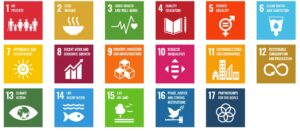In a recent blog post I began exploring the question of how to take social sector partnerships from good to great. We looked at data showing that employers can increase their investment in environmental, social, and governance sustainability.
I now explore the role of non-profits. By adapting planning, messaging, and reporting with employers, I believe non-profits can achieve greater outcomes. This hypothesis stems from my own experience across 20 years of consulting with dozens of employers, non-profits, and government offices. I increasingly see non-profits articulate their value proposition on their terms and share it in search of new or renewed funding sources – but they are often overlooked by employers, who don’t see the direct connection to their own objectives.
We can do better. Non-profits and employers need to see themselves as partners, working together to make progress on the issues that matter to both. Here are a few practices that I am working on:
- Understand your purpose. Increasingly, as part of the strategic planning that I facilitate, I help leadership teams align on their Purpose. Clarity of purpose helps you communicate the difference you make in a deeper and more meaningful way
Example: I am guiding a healthcare non-profit leadership team through a 3-month strategic planning journey. We used Simon Sinek’s “Finding Your Why” methodology to help the team discover the common purpose that unites their 4000+ employees and volunteers. Clarity of purpose builds a stronger team, which will help this non-profit in all of its work – including showing employers how it helps create a place where people want to live and work.
- Thanks to Elizabeth Grove, I learned about the UN-created Sustainability Development Goals. The 17 SDGs provide a universal framework that organizations can use these to message how their work ties to the goals.
Example: I work with an arts organization that provides education, performance, and creative art therapy. We could shift messaging from “support the arts” to “invest in creative art therapy as a tool for good health and well being (SDG #3)”, and “invest in music to drive math and literacy proficiency (quality education SDG #4)”.

- Non-profits can create opportunities to listen to employer priorities, collaborate and report on progress. Research, board participation, joint problem-solving sessions, and old-fashioned coffee meetings are example opportunities.
Example: Opportunity at Work is a non-profit working to promote STARs, people “skilled through alternative routes”. I partnered with Redwood Advisors to design a governance approach that connects employers with STARS and workforce experts to jointly design & guide systems that work.
Here’s to making 2021 a year where we work together to build stronger teams that increasingly take social sector partnerships from good to great. If you would like to discuss further, give me a ring!